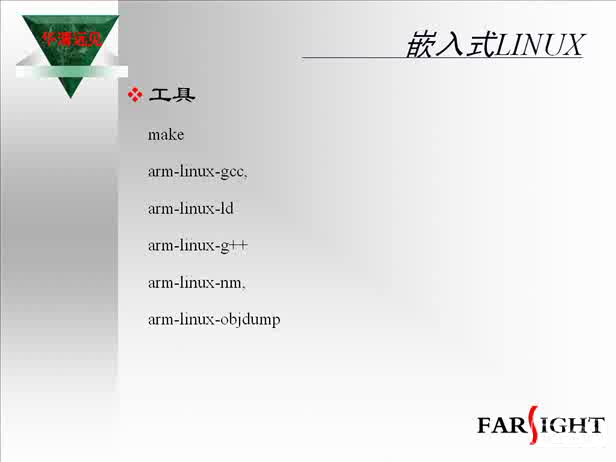Linux ALSA聲卡驅動之二:聲卡的創建
1. struct snd_card
本文引用地址:http://www.104case.com/article/201612/341246.htm1.1. snd_card是什么
snd_card可以說是整個ALSA音頻驅動最頂層的一個結構,整個聲卡的軟件邏輯結構開始于該結構,幾乎所有與聲音相關的邏輯設備都是在snd_card的管理之下,聲卡驅動的第一個動作通常就是創建一個snd_card結構體。正因為如此,本節中,我們也從 struct cnd_card開始吧。
1.2. snd_card的定義
snd_card的定義位于改頭文件中:include/sound/core.h
/* main structure for soundcard */
struct snd_card {
int number; /* number of soundcard (index to
snd_cards) */
char id[16]; /* id string of this card */
char driver[16]; /* driver name */
char shortname[32]; /* short name of this soundcard */
char longname[80]; /* name of this soundcard */
char mixername[80]; /* mixer name */
char components[128]; /* card components delimited with
space */
struct module *module; /* top-level module */
void *private_data; /* private data for soundcard */
void (*private_free) (struct snd_card *card); /* callback for freeing of
private data */
struct list_head devices; /* devices */
unsigned int last_numid; /* last used numeric ID */
struct rw_semaphore controls_rwsem; /* controls list lock */
rwlock_t ctl_files_rwlock; /* ctl_files list lock */
int controls_count; /* count of all controls */
int user_ctl_count; /* count of all user controls */
struct list_head controls; /* all controls for this card */
struct list_head ctl_files; /* active control files */
struct snd_info_entry *proc_root; /* root for soundcard specific files */
struct snd_info_entry *proc_id; /* the card id */
struct proc_dir_entry *proc_root_link; /* number link to real id */
struct list_head files_list; /* all files associated to this card */
struct snd_shutdown_f_ops *s_f_ops; /* file operations in the shutdown
state */
spinlock_t files_lock; /* lock the files for this card */
int shutdown; /* this card is going down */
int free_on_last_close; /* free in context of file_release */
wait_queue_head_t shutdown_sleep;
struct device *dev; /* device assigned to this card */
#ifndef CONFIG_SYSFS_DEPRECATED
struct device *card_dev; /* cardX object for sysfs */
#endif
#ifdef CONFIG_PM
unsigned int power_state; /* power state */
struct mutex power_lock; /* power lock */
wait_queue_head_t power_sleep;
#endif
#if defined(CONFIG_SND_MIXER_OSS) || defined(CONFIG_SND_MIXER_OSS_MODULE)
struct snd_mixer_oss *mixer_oss;
int mixer_oss_change_count;
#endif
};
struct list_head devices 記錄該聲卡下所有邏輯設備的鏈表
struct list_head controls 記錄該聲卡下所有的控制單元的鏈表
void *private_data 聲卡的私有數據,可以在創建聲卡時通過參數指定數據的大小
2. 聲卡的建立流程
2.1.1. 第一步,創建snd_card的一個實例
struct snd_card *card;
int err;
....
err = snd_card_create(index, id, THIS_MODULE, 0, &card);
index 一個整數值,該聲卡的編號
id 字符串,聲卡的標識符
第四個參數 該參數決定在創建snd_card實例時,需要同時額外分配的私有數據的大小,該數據的指針最終會賦值給snd_card的private_data數據成員
card 返回所創建的snd_card實例的指針
2.1.2. 第二步,創建聲卡的芯片專用數據
聲卡的專用數據主要用于存放該聲卡的一些資源信息,例如中斷資源、io資源、dma資源等。可以有兩種創建方法:
通過上一步中snd_card_create()中的第四個參數,讓snd_card_create自己創建
// struct mychip 用于保存專用數據
err = snd_card_create(index, id, THIS_MODULE,
sizeof(struct mychip), &card);
// 從private_data中取出
struct mychip *chip = card->private_data;
自己創建:
struct mychip {
struct snd_card *card;
....
};
struct snd_card *card;
struct mychip *chip;
chip = kzalloc(sizeof(*chip), GFP_KERNEL);
......
err = snd_card_create(index[dev], id[dev], THIS_MODULE, 0, &card);
// 專用數據記錄snd_card實例
chip->card = card;
.....
然后,把芯片的專有數據注冊為聲卡的一個低階設備:
static int snd_mychip_dev_free(struct snd_device *device)
{
return snd_mychip_free(device->device_data);
}
static struct snd_device_ops ops = {
.dev_free = snd_mychip_dev_free,
};
....
snd_device_new(card, SNDRV_DEV_LOWLEVEL, chip, &ops);
注冊為低階設備主要是為了當聲卡被注銷時,芯片專用數據所占用的內存可以被自動地釋放。
2.1.3. 第三步,設置Driver的ID和名字
strcpy(card->driver, "My Chip");
strcpy(card->shortname, "My Own Chip 123");
sprintf(card->longname, "%s at 0x%lx irq %i",
card->shortname, chip->ioport, chip->irq);
snd_card的driver字段保存著芯片的ID字符串,user空間的alsa-lib會使用到該字符串,所以必須要保證該ID的唯一性。shortname字段更多地用于打印信息,longname字段則會出現在/proc/asound/cards中。













評論